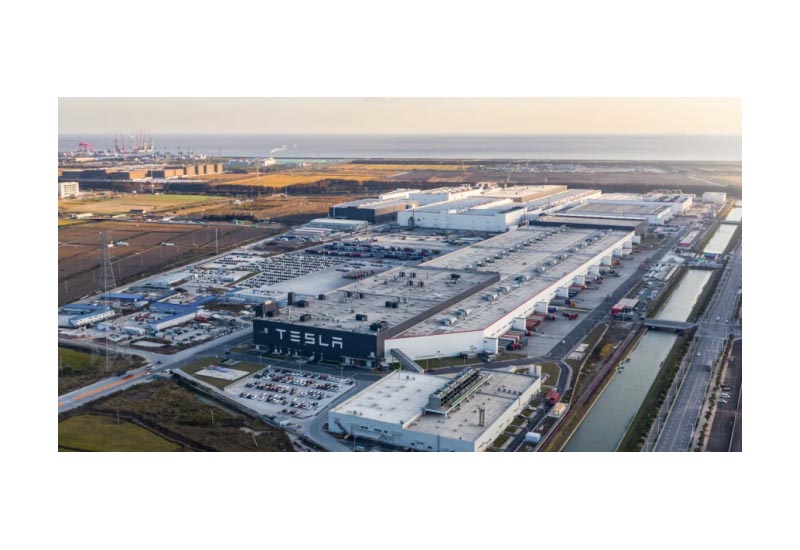Tesla is putting the pedal to the metal on expanding its European manufacturing operations, Tesla’s Gigafactory Berlin has been in operation since March of last year, Palo Alto base has kicked off the approval process to double annual production capacity at Giga Berlin in Germany to 1 million vehicles, up from the current 500,000.
To achieve its goal of doubling its annual capacity, Tesla confirmed in late March of this year that it had added a third shift at the Giga Berlin factory, which helped the company achieve a weekly production rate of 5,000 vehicles. Now, Tesla is attempting to add a fourth production shift to double its weekly production rate from 5,000 to 10,000 vehicles.
The proposed expansion comes on the heels of Tesla surpassing its initial weekly production target of 5,000 Model Ys at the plant near Berlin. Hitting that milestone in March, just a year after deliveries started, is a testament to the company’s ability to ramp up quickly, but Elon Musk is clearly hungry for more.
Tesla’s plan calls for building an additional manufacturing area at Giga Berlin and upgrading equipment in existing facilities. The company filed documents with regulators indicating it wants to boost battery production capacity from 50 gigawatt-hours per year to 100.
This next-level push makes sense when considering demand trends. “A production rate of 10,000 vehicles per week is more than sufficient for a single model in Europe,” said Ferdinand Dudenhöffer, director of the Center for Automotive Research in Germany. “Tesla needs to start producing the compact model in Europe, and the fastest way is to expand Giga Berlin.”
Not surprisingly, the proposal is already facing skepticism from environmental groups. Part of the factory complex sits on a water protection zone, dredging up concerns about resources. A local Green party leader urged regulators to take a harder look this go around.
But Musk doesn’t seem deterred. He appears determined to leverage Giga Berlin as a cornerstone of Tesla’s broader European expansion. And the company is moving swiftly, launching the legally required public consultation period from mid-July through mid-September.
Will be tracking closely to see if this ambitious timetable holds.
Related Posts:
Tesla’s Model Y Gets a Boost from BYD Batteries in Germany
Tesla Model Y is Taking Over Europe, Leads European Electric Car Sales in 2023 Q1
Tesla Goes to War in Europe: The Plan to Kill Internal Combustion Engine (ICE)
